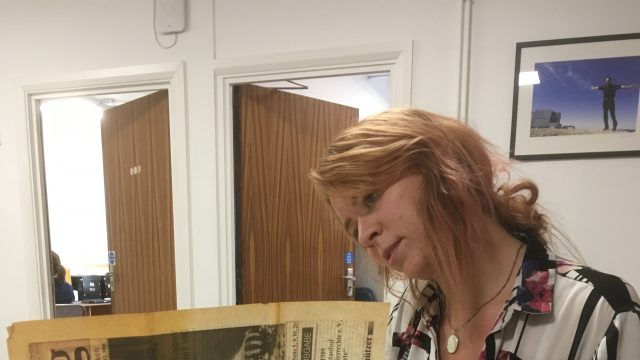Catherine Oliver
Catherine Oliver is a Doctoral Researcher in Human Geography, at The School of Geography, Earth and Environmental Sciences, University of Birmingham. Her Ph.D. Research is called “Changing Spaces of Animal Rights Activism in the U.K.” Her study looks to better understand how and why the animal rights movement has changed in the U.K. since 1950. There is much evidence to suggest that the animal rights movement is increasingly becoming deeply situated within social justice activism, and thus the tactics and practices of activists are changing, and opening to collaboration.
“My project applies geographic theory to how the changing places and methods of activism influences the way people feel about the movement itself, and the way the movement is expanding,” Catherine told me.
Catherine’s work includes archival research, ethnographic studies, and interviews with animal adovates. Her research has three different approaches. First, archival research with the archive of long-standing animal advocate and author, Richard Ryder, who donated his collection to the British Library. The second method involves engaging with activists to understand the issues from a personal and collaborative perspective. The final part involves interviews with activists to determine areas of agreement and disagreement with my research findings.
“I’m honoured to have been awarded a Ph.D. placement at the British Library that enabled me to research Ryder’s archives,” Catherine said. His collection includes correspondence, papers, manuscripts of his books, organisation’s publications, and so on. “It was exciting to be the first person to review this important collection that documents the history of the animal rights movement.” Ryder continues to donate materials to the British Library.
Catherine accepted my invitation to visit my animal rights collection at my office in Hastings in August. For two days, we looked through the material together.
“Kim’s animal rights collection is very impressive because it includes a variety of materials covering some 200 years,” Catherine said.
To learn more Catherine’s research, please visit this Google document.
You can also follow Catherine on Twitter as @katiecmoliver












